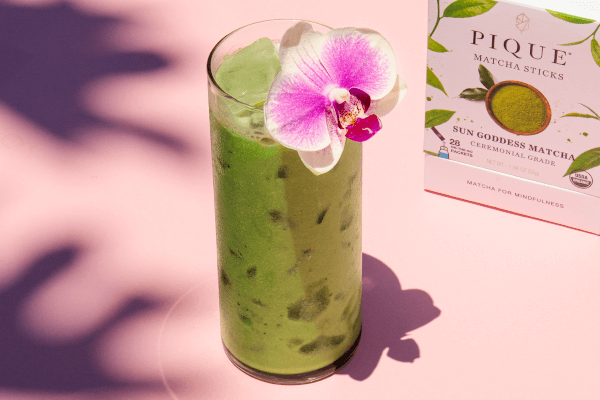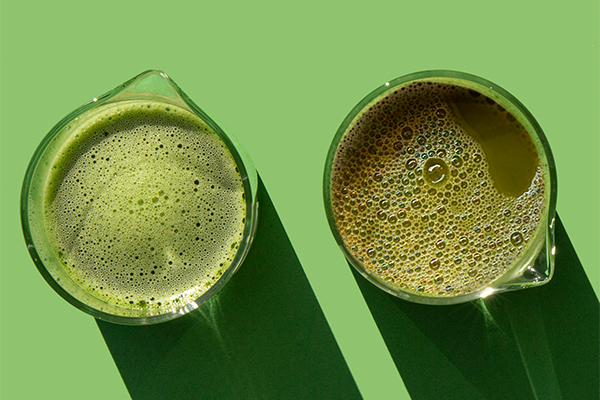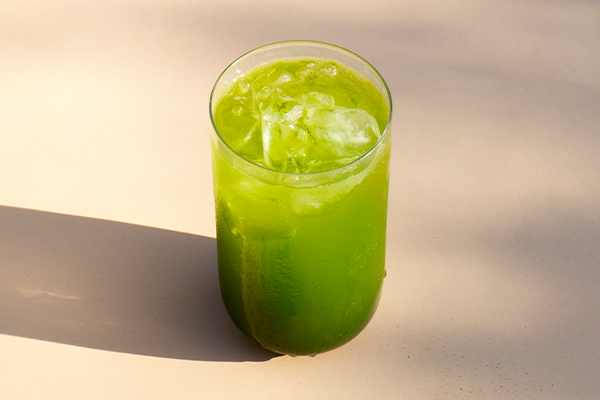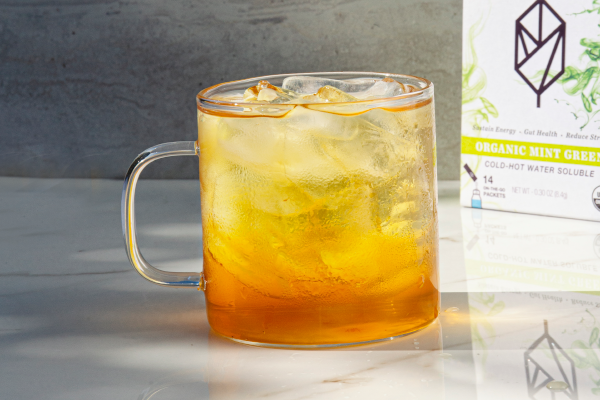Are you intrigued by matcha’s health benefits and unique look, but hesitate to drop dollars on the drink because you simply don’t know if you’ll like it? Read on to learn a bit more about matcha’s unique flavor and mouthfeel, and how best to enjoy drinking matcha for the first time.
Is Matcha Sweet or Bitter?
Matcha has many of the same flavor characteristics of regular green tea: a grassy flavor and vegetal taste marked by a bit of bitterness and a touch of sweetness lingering on the back end.
Tea plants destined for matcha are kept shaded for up to three weeks prior to harvest, which allows their chlorophyll content to build up. That chlorophyll contributes not only to matcha’s green color but also its vegetal flavor, which tends to be more pronounced compared to standard brewed green tea.
Like most plants, though, the green tea leaves used for matcha do also have a natural sweetness. But sweetness is certainly not the predominant flavor — more of a background note underlying and balancing out the taste of matcha’s astringency.
What really sets good matcha tea apart taste-wise, however, is umami.
Umami refers to a flavor separate from the well-known categories of sweet, salty, sour and bitter. It’s tied to glutamate, an amino acid that imparts a rich, savory taste and is often associated with mushrooms and red meat. That savory flavor is more pronounced in matcha compared to standard brewed green tea. (It’s also thanks to matcha’s high l-theanine content.)
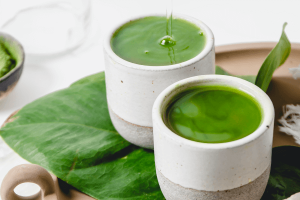
What About Matcha’s Mouthfeel?
High quality, ceremonial grade matcha powder (as opposed to culinary grade matcha), should be very fine, with no clumps.
When whisked into hot water with a bamboo whisk, it should disperse evenly. It does not, however, dissolve. If left to sit too long, the matcha particles will eventually settle at the bottom of your bowl or cup, which could result in a few sandy sips. That’s typically why a cup of matcha is served in small portions (4 ounces at most) and meant to be drunk right away — so it can be consumed quickly enough to avoid settling.
When it is prepared correctly and consumed immediately after, the consistency of premium matcha should be smooth and a little frothy, with no noticeable grittiness. Using a little more powder will result in a thicker consistency, while less will mean a thinner mix — it all depends on your taste.
What’s the Word on Matcha Lattes?
Traditionally, matcha is consumed without milk or added sweeteners. But many modern-day matcha drinkers have broken with that preparation to make the powder a little more palatable. If the grassy flavor of green tea is not one you particularly enjoy, you can mask some of the bitterness by swapping out espresso for matcha in a cup of steamed milk.
But, depending on the type of milk and sweetener you choose, you could risk wiping out health benefits conferred by matcha’s antioxidants by gussying it up too much. A 16-ounce matcha green tea latte from one popular coffee chain, for example, packs 240 calories and 32 grams of sugar using 2% milk and simple syrup.
Beyond the nutritional implications, lattes, smoothies and other more intricate beverages preclude drinkers from understanding true matcha flavor. Historically used in Japanese tea ceremonies, matcha’s complex and robust flavor is meant to inspire thought and spur conversation. So if you really want to give this green tea powder a try, it’s worth giving it the attention it deserves.
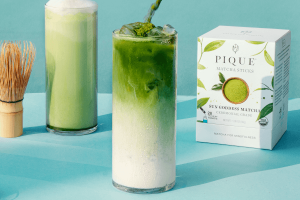
The Takeaway
Matcha’s flavor is similar to green tea, but amplified. Its hallmark characteristics are a grassy, bitter taste with a sweet aftertaste. Its texture should be smooth — not gritty. And though pretty green lattes may look tempting, you’re more likely to get a true matcha taste and reap greater health benefits by enjoying it simply and traditionally — with hot water and nothing else.
